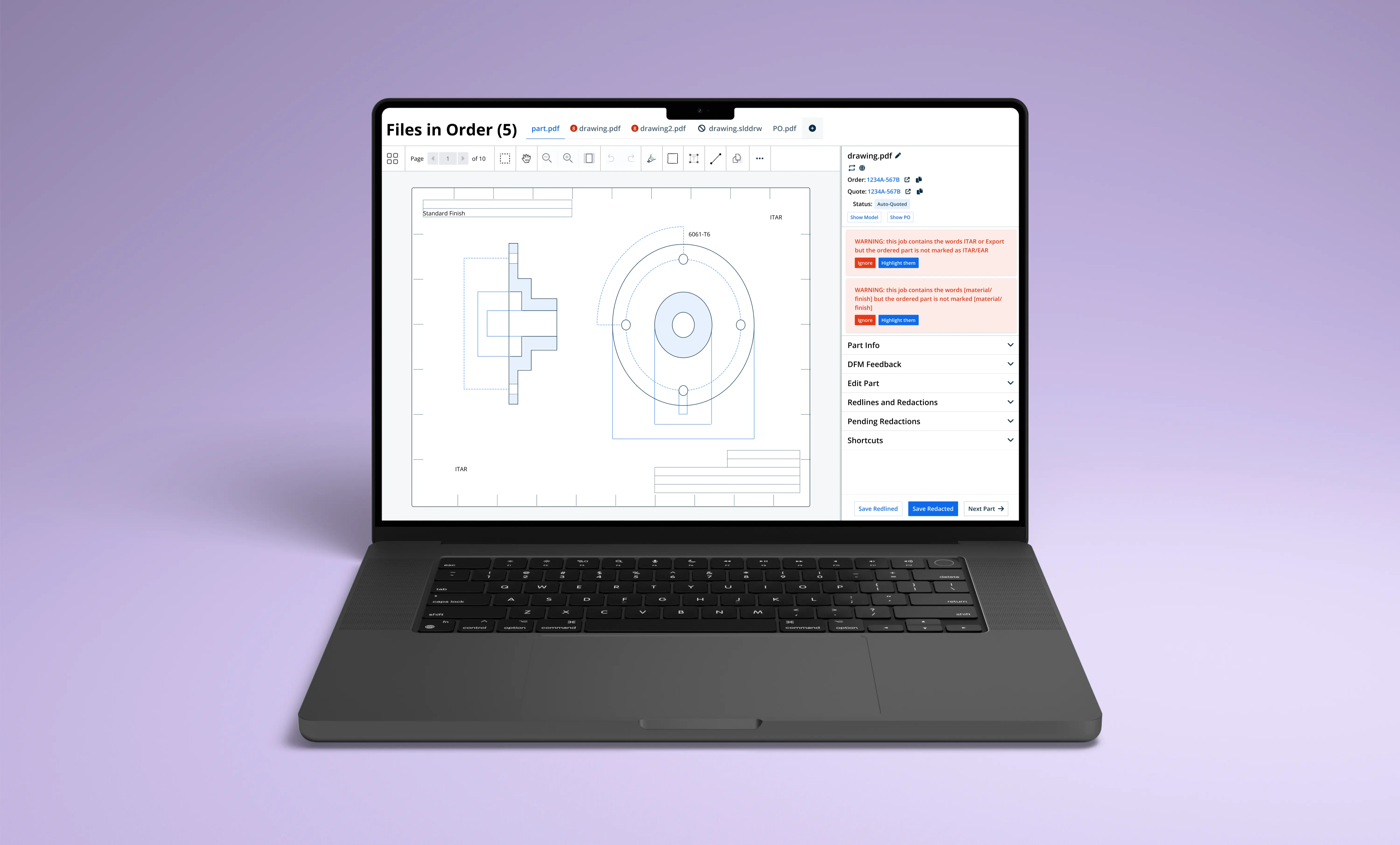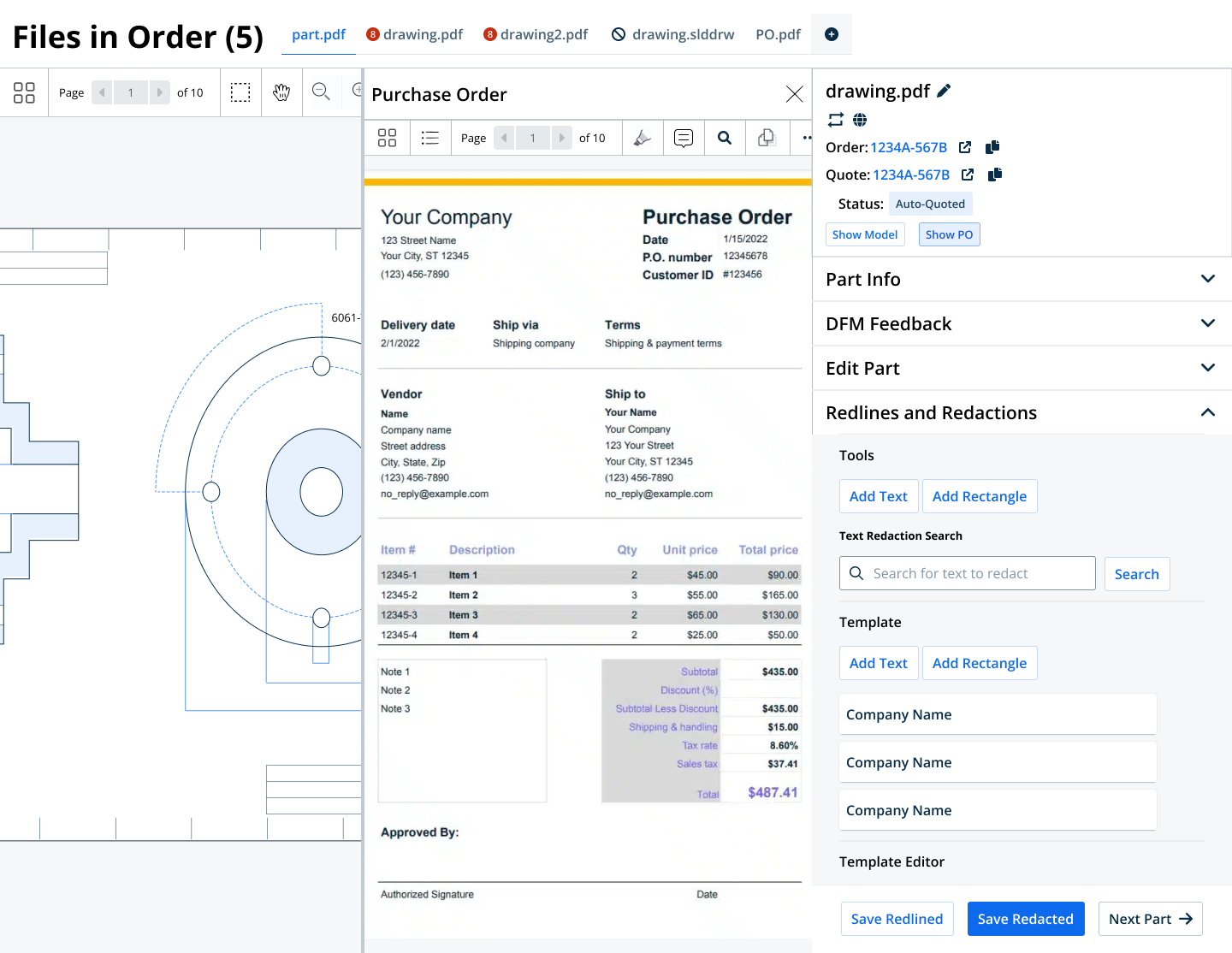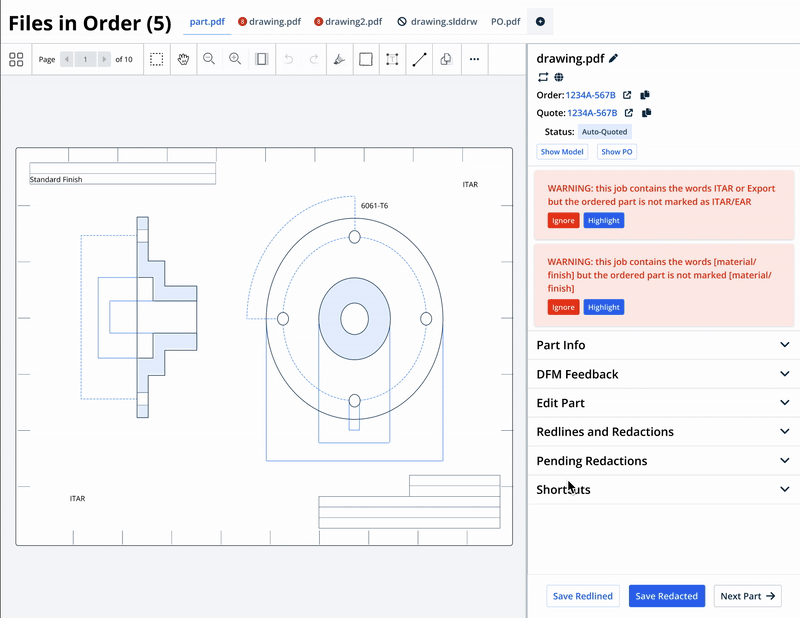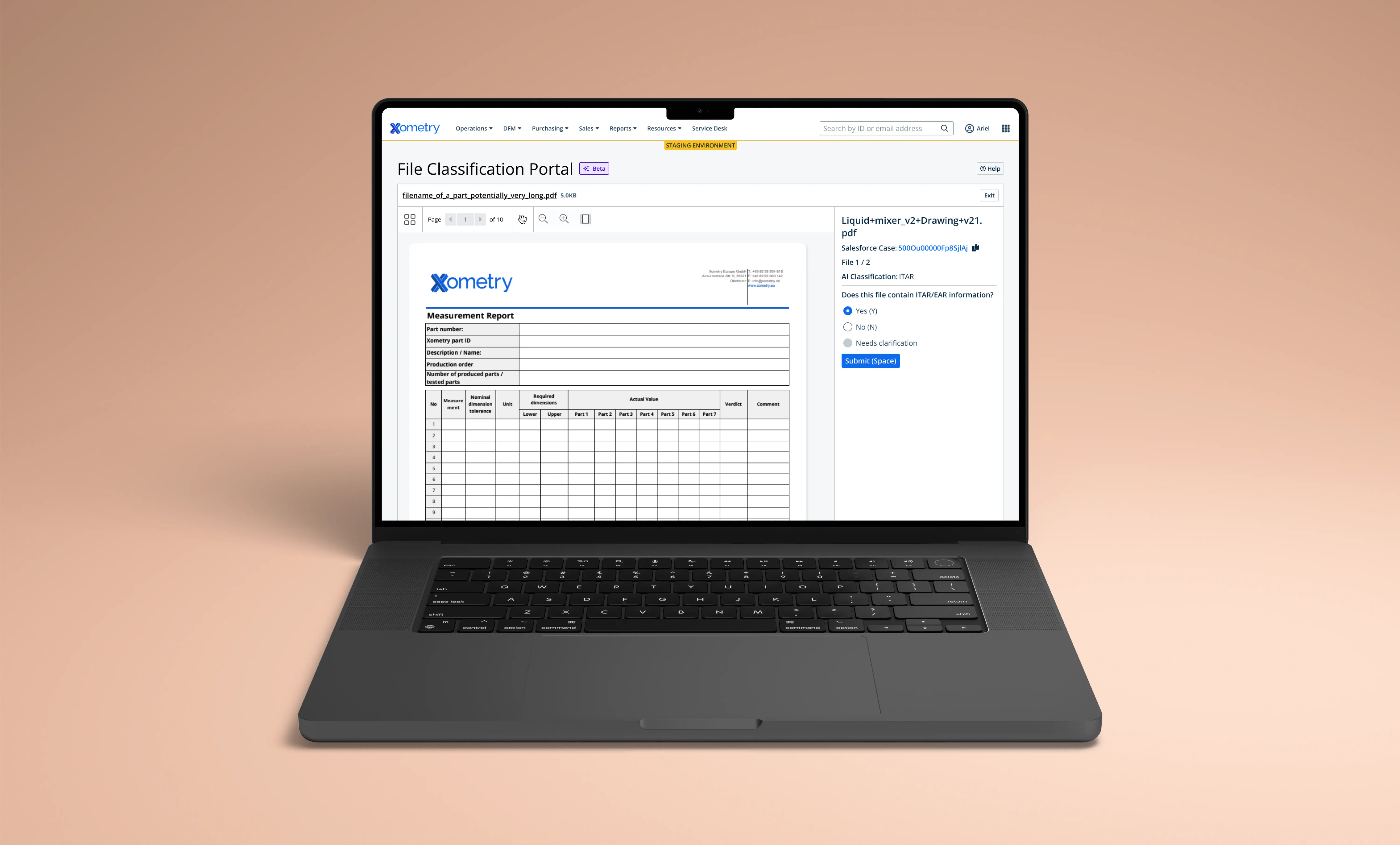Deep Discovery and Ideation for Redesigning the Staff Manufacturing Review Tool

Untangling User Needs on an Outdated System
The legacy Xometry staff platform was created and updated as new user needs appeared. Therefore the information architecture was disorganized and poorly structured, with related information scattered across the platform. I focused on the file viewer and editor housed on the staff platform’s Ordered Part Details page that many hoped to remove entirely. There are various use cases for the file viewer interface with differently used tools on the staff, customer, and partner platforms. Xometry’s in-house engineers, Design for Manufacturing engineers who focus on the feasibility of building parts, largely utilize the tool by redacting and striking through information from part drawings before sharing with partners while other teams use it as a file viewer to reference account or order information.
MY ROLE
UX Researcher
UX Designer
TEAM
Direct UX Design Manager
Senior Design Manager
8 Stakeholders
DURATION
2 months
My challenge was to perform an extensive UX audit on the DFM Engineers use case and test potential redesigns using the new design system while producing project artifacts for future use and reference..
Unpacking a Project Space with Low Visibility
Entering this project, there were very few insights into the DFM engineering team’s process from a non-technical perspective. The process was further obfuscated by the fact they were working on legacy pages which were built up by engineers to address immediate staff needs. The product team did not even know that DFM engineers were heavily involved in manual outsourcing orders to partner groups. Therefore, I reached out to various DFM engineers, conducting intensive interviews and investigation into understanding their responsibilities, key concerns, and main objectives. I quickly learned to approach staff interviews with actual use cases for clarity into the highly technical process while sharing and remembering summarized findings and recordings so neither me nor my team underutilized time with the DFM engineers.
Key Learnings:
Disorganization of information across pages
Need to cutdown navigation and scrolling time within tool interface
Longer processing time for repeat orders than new customers


Presenting Highly Technical Information and Early Designs
While brainstorming, I looked at the various other applications staff previously or currently used while viewing and editing customer files. I also took into consideration the API they currently utilized on-platform as well as similar competitors. After taking this in, I drafted three designs which maintained the tools needed while also introducing more organization and user-friendliness. But in order to get helpful feedback and collaborate with other designers on this project, I had to learn how to share the very technical information of the DFM process succinctly without losing any of the pertinent details. This project taught me not only how to consider designing for specialized employees but how to disseminate their process and key concerns with others.



Early and Often: Usability Testing and Clickable Prototypes
After creating several wireframes, I gathered conflicting feedback from both designers and DFM engineers. As a designer, I realized the importance of not just following good design methods but understanding how that translates to meeting user needs. Thus, I tweaked two mid-fidelity prototypes in order to create a low-lift easy win and a longer term solution.

Cutting Down the Noise: Creating Visibility for Accessible Insights and Future Design Work
I created detailed journey maps and presentations dissecting the complex flow DFM engineers use to validate and edit customer part drawings, into detailed journey maps and presentations, allowing for better understanding of their responsibilities. This transparency allowed for greater staff advocacy as many product leads were unaware about the impact DFM engineers have on orders. I drafted wireframes and early prototypes for early feedback while simultaneously preparing prioritized light lifts for engineers to highlight the need for future work on the product roadmap. With more time, I would conduct user testing and collaborative sessions to create more finely tuned designs that problem-solve drawbacks of our fileviewer API.
With this project:
Released updates within tool experience including key concerns about viewing associated files, text-editing, and various bugs.
Produced document detailing action items sorted by priority and deliverability with the head of product management.
Created detailed user flows and wireframes for future use and reference.

